Delight in this charming market town, then
find adventures in the hills beyond.
It seems to me that the smooth hills and
deep valleys of ancient Shropshire enclose a dreamy, mystical landscape.
Timber-framed houses line cobbled streets in characterful market towns;
crumbling castles dominate high ground with distant views; and charming
villages are threaded along green roads once tramped by drovers. It’s and
enchanting idyll that’s hard to resist.
My favorite place is the neatly organized
town of Bishop’s Castle, once England’s smallest borough, with a reputation for
sending more than its fair share of Members of Parliament to Westminster in the
18th and 19th centuries.

The first eponymous fortress built by the
Bishop of Hereford around 1087, was timber framed ad one of several between
Ludlow and Shrewsbury. Commissioned by powerful marcher lords determined to
make a realm for themselves, the chain of border strongholds kept Welsh
marauders at bay.
In 1167, work started on the construction
of a new stone castle and around this grew the medieval town. Divided into
rectangular burgage plots, land on the steeply sloping hillside was sold to
settlers keen to build dwellings and workshops. Alleyways or ‘shuts’ linking
close rows of buildings were closed foe security at night. The attractive 12th-century
town plan remains largely unspoiled; the church of St John be Baptist is at the
bottom of the hill, the town hall, market place and castle ruins are at the
top, and in between is a maze of characterful buildings.
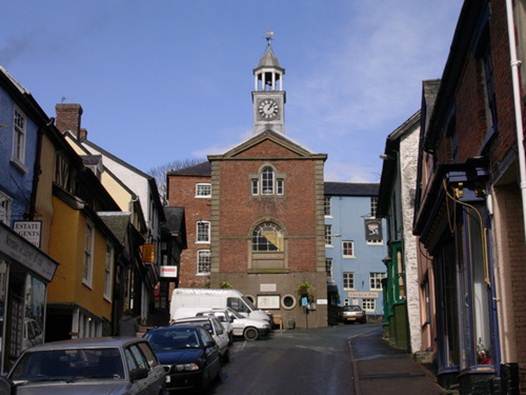
In
1167, work started on the construction of a new stone castle and around this
grew the medieval town.
I sense an appreciation of a gentle pace of
life in rural south Shropshire and the one-handed blue-faced clock on the tower
of St John the Baptist proves it. While most parishes moved with the times and
fitted church clocks with a hand to count the minutes, the congregation of
Bishop’s Castle chose to maintain a more leisurely outlook, preferring theirs
to count only the hours.
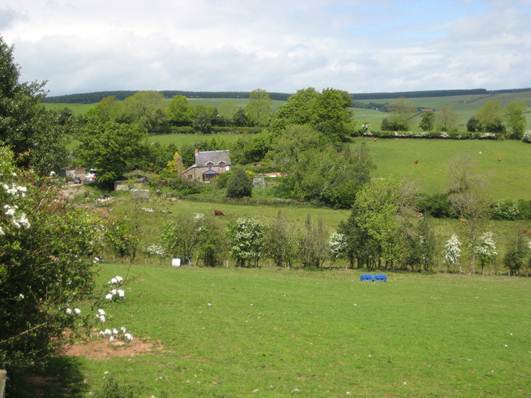
I
sense an appreciation of a gentle pace of life in rural south Shropshire
Gird your loins for a steady 1:6 climb from
the church to the marketplace and beyond to the castle ruins. Beautifully
preserved historic shops and houses of many colors line up for inspection along
the attractive High Street, including spectacular timber-framed buildings, such
as cosy Bumbles Cottage and the imposing Porch House, built with timbers felled
in 1564.
Full of charm
Just when you think you are deep in the
heart of olde England, playful Bishop’s Castle takes you by surprise. The
winged fairy Titania greets you near the top of the hill – the life-sized metal
sculpture by Roj Williams is charming. Likewise, the array of woven baskets
displayed around the door of Sol Deli. And the seductive Spanish aromas from
within are irresistible.
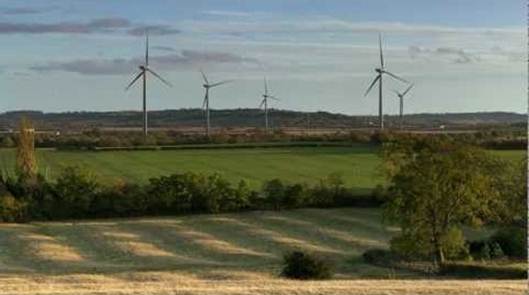
Just
when you think you are deep in the heart of olde England, playful Bishop’s
Castle takes you by surprise.
There are further exotic delights at
Textile Traders, a glorious den of handmade fabrics, jewellery and crafts from
around the world. The cobbled street climbs to the medieval timber-framed House
on Crutches, Bishop’s Castle’s local history museum, and the handsome 18th-century
town hall, topped by a clock that rings our every 15 minutes. Below stairs, the
public toilets were formerly the town gaol.
Pause on the bench at the top of the hill
to look back over the pretty High Street. An inscription on the seat reads ‘In
Memory of a Shropshire Lad’, a gentle nod to AE Housman’s famous collection of
poems about the county. From this viewpoint it’s a short walk to the Market
Square and Yarborough House, a great place to indulge many hours searching
through second-hand books and the largest selection of classical music CDs and
LPs outside London. Discover beautiful arts and crafts work by local artists at
the Gallery, which also stocks a fun range of vintage homeware.

Pause
on the bench at the top of the hill to look back over the pretty High Street.
Into the hills
After a day exploring the country market
town, you can continue your weekend adventures walking in the Shropshire Hills.
From the town, the ancient elevated Kerry Ridgeway, or Ffordd Las Ceri,
yourneys 15 miles to Cider House Farm, near the village of Kerry, over the 15
upright stones of Mitchell’s Fold Bronze Age stone circle offer a tighling
sense of connection with our long-lost forebears and superb views of the jagged
Stiperstones, perhaps the most recognizable of the Shropshire Hills, and then
the Welsh mountains beyond.
The Shropshire Way also passes through
Bishop’s Castle; a popular 12-miles section travels north to the peaceful
hamlet of Bridges. Alternatively, follow the long distance path 12 miles south
to the ancient, attractive town of Clun.
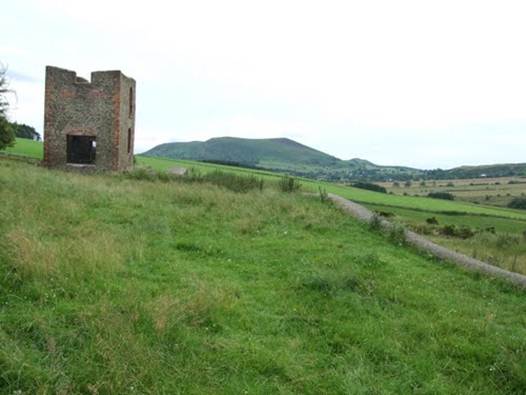
The
Shropshire Way also passes through Bishop’s Castle
The Shroshire Hilss Shuttle Bus operates a
summer weekend service, transporting walkers from Bishop’s Castle to departure
points for footpaths to the craggy Devil’s Chair, atop the ridges of the
Stiperstones, and the high purple heather moor of the manificent Long Mynd, Shropshire’s
distinctive hog-back hill.
This landmark mound is trewn with paths,
many departing from characterfull Church Stretton, at the foot of the Mynd.
Muddy boots and rucksacks are a familiar sight all around; like Bishop’s
Castle, Church Stretton has Walkers are Welcome status.
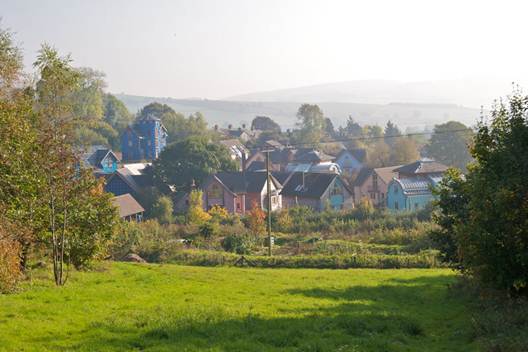
The
Shroshire
The combination of English and Welsh words
in name of the Long Mynd, translated as the ‘ling big hill’, confirms the
international legacy of Shropshire’s rural frontier land. Drovers and livestock
journeyed between Wales and England on rural and horseriders. The Portway track
across the top of the Long Mynd was a trade route used by our prehistoric
ancestors; today it is a designated bridleway.
A favourite six-mile walk up the Long Mynd
is from Carding Mill valley to Pole Bank, from where there are more huge views
of the Shropshire Hills with the bonus of afternoon tea in the National trust
Chalet Pavilion tearoom on return.